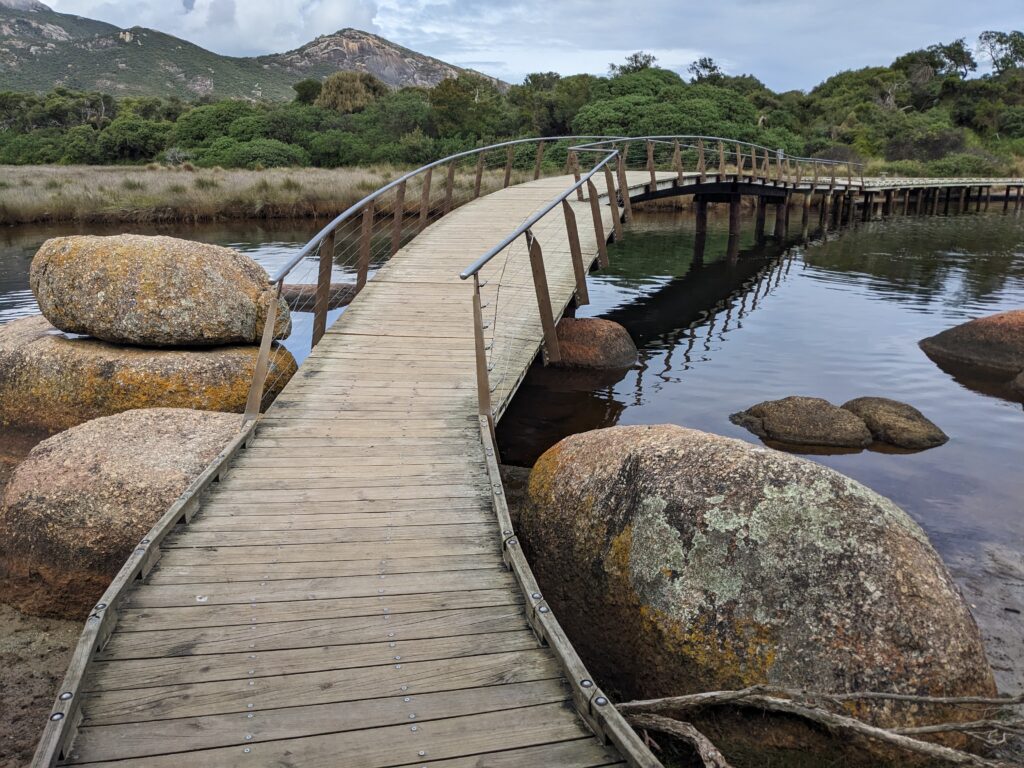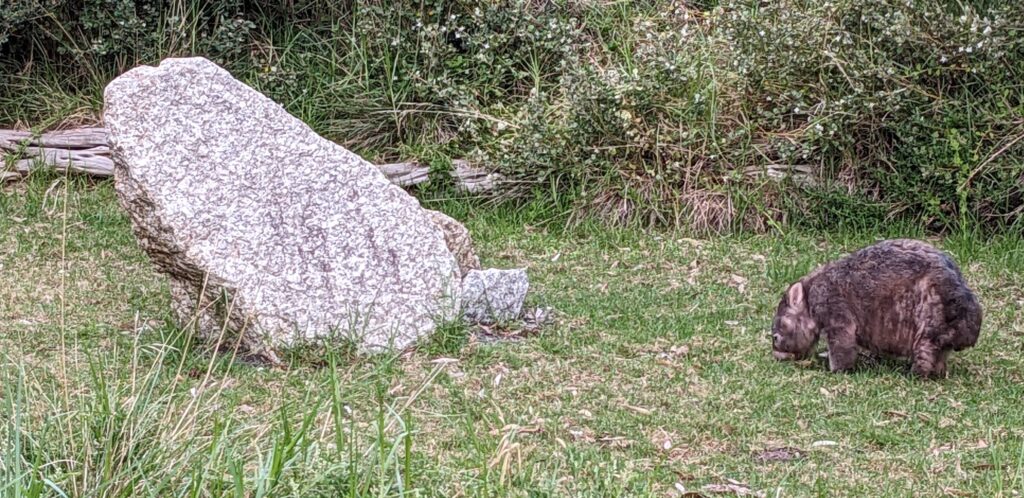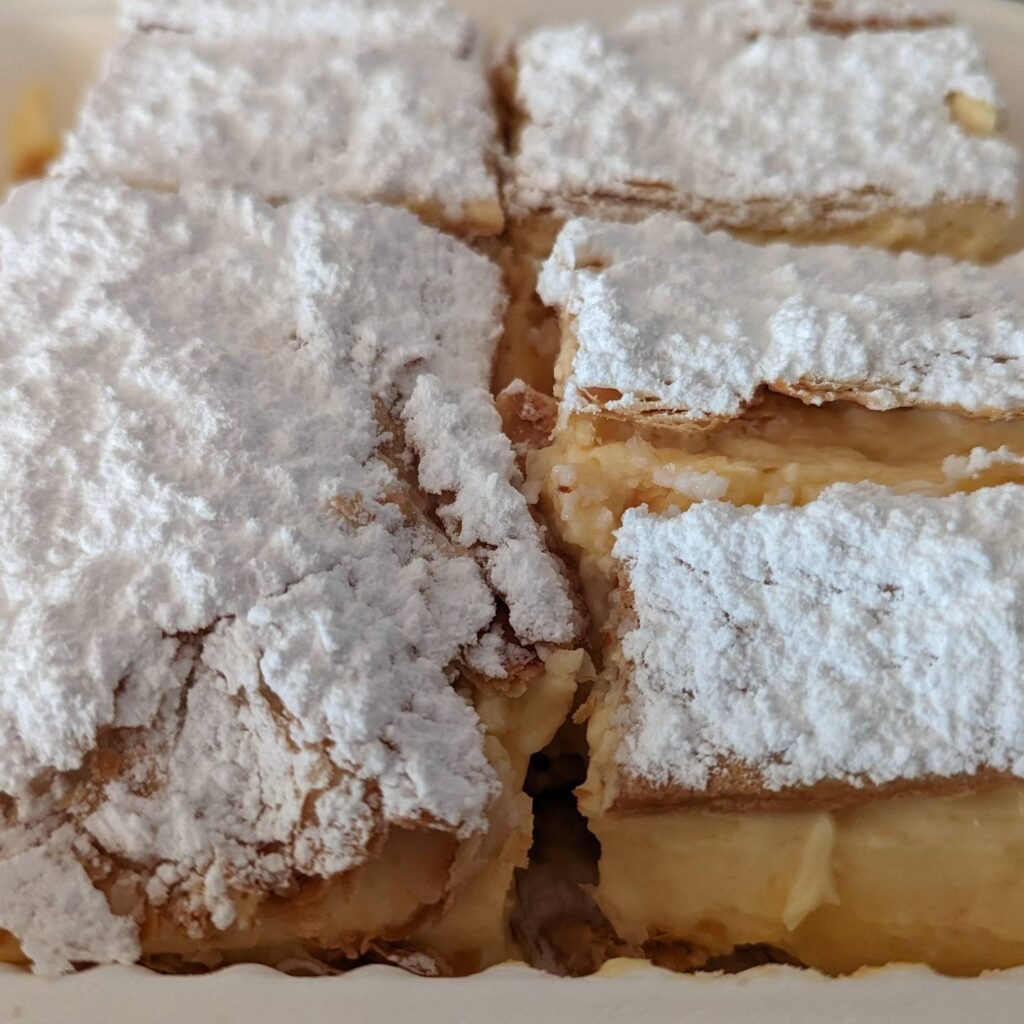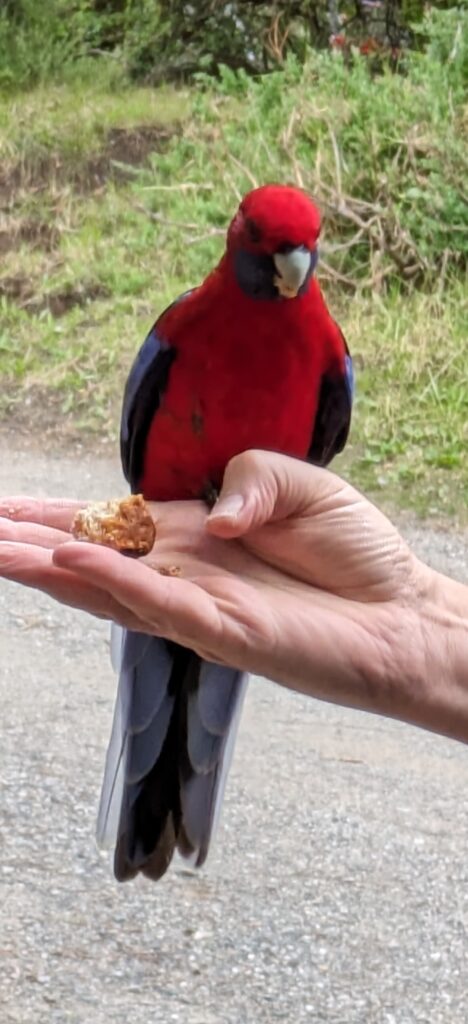Thou through the fields and through the woods dost stray,
Roaming the countryside, a truant boy,
Nursing thy project in unclouded joy,
And every doubt long blown by time away.
~ Matthew Arnold, The Gypsy Scholar

We’ve snuck away for a week or two with Barney. The One & Only has a plan to close the loop of previous trips, and drive between Melbourne and Bega. Of course, that means a spur-of-the-moment visit to our good friends in Buninyong, a coffee with our older son in Collingwood, and a weekend with mates on the Mornington Peninsula. And thus, we come to Rosebud.
Rosebud. What a fabulous name for a town! Once a tiny settlement on the southern edge of Port Philip Bay, it was named after a ship, the Rosebud, which was wrecked on the beach, in the winter of 1855. The locals lived off the flotsam and jetsam for years! Now, it is a bustling suburb, awash with holiday makers, and this week the circus is in town, the red and white striped marquee squatting on the Rosebud Village Green, opposite the pub. Wandering down to the beach, we spot the Spirit of Tasmania heading back from Devonport, swinging east from Queenscliff and almost clipping the end of the jetty. In the distance, we can see the high rises of Melbourne poking up like asparagus spears on the horizon to the north. To the southwest, Barwon Heads guard the entrance into Port Philip Bay, and a stone’s throw up the coast, the ferry dashes back and forth from Mornington Peninsula to the Bellarine. Next time, we will come that way…
For years Rosebud grew infinitesimally, well off the beaten track, a long haul from Melbourne by horse and cart. When a pier was finally built in 1888, it was too short and shallow for the ferries to dock. A post office opened the following year, but the first pub wasn’t built until 1940. And for decades, it was the only pub in town.
Rosebud, unlike the rather snazzier suburb of Sorrento, is wonderfully low key, its back streets full of old-fashioned family beach shacks. The artist, Arthur Boyd, lived here with his grandfather in the 1930s and painted the jetty. Judith Durham of the Seekers apparently spent her childhood summers here. The town sits beneath the lower slopes of Arthur’s Seat, a prominent feature in the landscape of Port Philip Bay. From the summit, on a clear day, you can see the Melbourne city skyline, Mount Macedon behind, and the You Yangs to the west. A chair lift, the Arthur’s Seat Eagle, will carry you up and down the eastern slope of the hill.
After World War II, as more and more families were able to afford cars, travelling down the coast to camp on the foreshore at Rosebud in the summer holidays became an annual tradition for many Melbourne families. Today, the campsite stretches the length of the town, providing a green strip of trees, shrubs and grass between the main road and the beach, the influx of campers doubling the local population in the summer months.
And suddenly, after a slow start, the town took off. By the 1960s, Rosebud had a shopping centre and was enticing a growing number of ‘sea change’ retirees to move down here permanently. Today, it is one of the main towns on the peninsula. The long Rosebud pier was restored in 2015, and the area is popular for its variety of weekend markets.
On Saturday afternoon, we take a drive up to Sorrento to inspect its wonderful bookshop, Antipodes, which will support the second Sorrento Writers Festival later this month. Already, the books of writers who will be visiting are piled up at the front of the store and the program makes me wish I had time to come back for this budding event. Downstairs, at the back of the shop, a long staircase descends to a treasure trove of books for kids.
There is a café at the top of the high street where the world’s best vanilla slice is made; that classic Australian pastry of thick vanilla custard sandwiched between layers of filo pastry and dusted with icing sugar. Long a favourite with the One & Only, I was not much of a fan. Until I tried this one. Served up in huge trays, we buy four huge slabs to take home, and somehow resist dipping our fingers into the silky custard or leaving our prints in the icing sugar.
I also manage to find an outfit for an up-coming wedding. As shopping has never been a favourite occupation, I walk reluctantly into the first dress shop we pass – and walk out with an entire outfit, including shoes, only fifteen minutes later! Now that’s my kind of shopping.
With the car boot filled with books and pastries and new clothes, we take a short drive past Millionaire’s Walk to the end of the peninsula, and the Point Nepean National Park.
On this wild and windy stretch of land a Quarantine Station was established in 1852, to test migrants and, later, incoming stock, as overcrowding on immigrant ships often led to serious outbreaks of infectious diseases. Since then, this isolated community has fulfilled a number of different roles and a plethora of heritage-listed buildings remain, including five two storey hospital blocks and a communal bathing complex.
After Federation in 1901, the Commonwealth took control and more buildings were added, including a stately Administration Building. During the Spanish Flu pandemic in 1919, 12 wooden ‘Influenza huts’ were added to house an influx of patients. In World War II, the army moved in, and remained here until 1985. In the 1990s, it was converted into a refugee camp for Kosovars fleeing from the Bosnian War. And in 2009 the Quarantine Station became part of the Point Nepean National Park.
We wander through this fascinating town full of ghosts and dip our toes in the sea before heading home for tea – and vanilla slice!
Well-fed and well rested, it is time to move on, and as our friends head back to the city, we pack up the van and turn south again. We are aiming for Wilson’s Promontory, so it won’t be a long drive – and even then we only make it as far as Walkerville North. Here we find a campsite beside the sea, filled with more birds than campers on this drizzly autumn evening: pretty parrots dressed in moss green, others decked out in scarlet and blue. Apparently, there are also three resident wombats, but they keep a low profile while we are there. Two surfers take to the waves, as the sun sets. I am aghast to realize at low tide the next morning, that there is a broad reef of jagged rocks hiding below the surface.
In the morning, we turn east again, stopping for coffee at Fish Creek before traipsing down to Tidal River, the last point that cars can reach on Wilson’s Prom. From here, it’s a 20km walk to the end of the promontory and a lighthouse built in 1859. Or a two hour climb up to the top of Mount Oberon for views of Bass Strait and a plethora of offshore granite islands. Or a ten km walk via Squeaky Beach to Whisky Bay and back, along the cliffs. While we try to decide on a plan, we are tempted off the road by a sign indicating there is abundant wildlife to be seen in the scrub to our left. A scattering of kangaroos nibble at the grass near the car park but bound away as we wander towards them. Down a dirt track beneath scrubby trees, a large feathery mound suddenly grows a blue neck and head, as an emu pops its head up to watch us walk by. More kangaroos are sunbathing on the sward, and a brave, brown wallaby is waiting on the path to bid us a good afternoon before taking fright and leaping into the bush. A family of emus – could this be the one we met earlier? – accompanies us sedately back towards the car park. And we wave goodbye and head onwards.
Wilsons Promontory contains some 50,000 hectares of pristine coastal wilderness at the southernmost tip of Victoria, and Tidal River is the only caravan park here. Apart from some hiking trails and a few off-grid campsites, the rest of the Prom remains largely undisturbed. Granite islands are dotted along the west coast. We pass one that looks just like the sea turtle Crush from “Finding Nemo”.
Our next camp is tucked behind the sand dunes at Norman Beach, and there are still a surprising number of campers about. A posse of school kids arrive in buses, and there is the usual muddle of caravans and camper-trailers, tents and campervans scattered among the tea-trees and the she-oaks. As soon as we have unpacked the deck chairs and got the water boiling for tea, we are inundated with cheeky birds: crimson rosellas, magpies, wattle birds, a young kookaburra – all very used to visitors and quite happy to hop along the back of our chairs, swing from the awning or dip their beaks in the pasta sauce, without a please or thank you. Occasionally, a small wombat plods out of the scrub, seemingly oblivious of our presence.

We wander down to the river and follow it to the beach, where a huge amphibious boat is parked, another, far out on the bay, making its way back to shore. We stand and watch it whizz over the waves, pausing on the sandbank to lower its wheels and lumber the rest of the way through waist deep water. There are teenagers everywhere, clambering up the rocks, wading through the river, kicking balls on the beach, body surfing in the waves. A slice of heaven, simply teeming with adventures.
One enormous old wombat is hiding behind a bush as I clamber across the dunes after sunset and I’m not sure who gets a bigger fright. We both gallop down the dune in opposite directions. At dawn we are woken by a chorus of kookaburras, and the crimson rosellas are waiting to join us for breakfast. One determined wattle bird even sticks his beak in our yoghurt!
There is still so much to explore, but its time to go. We are aiming to be at Lakes Entrance this afternoon. So, we clear away our breakfast things and strike camp. And here I will leave you, for now…
*With thanks to DB for his vanilla slice snap!




